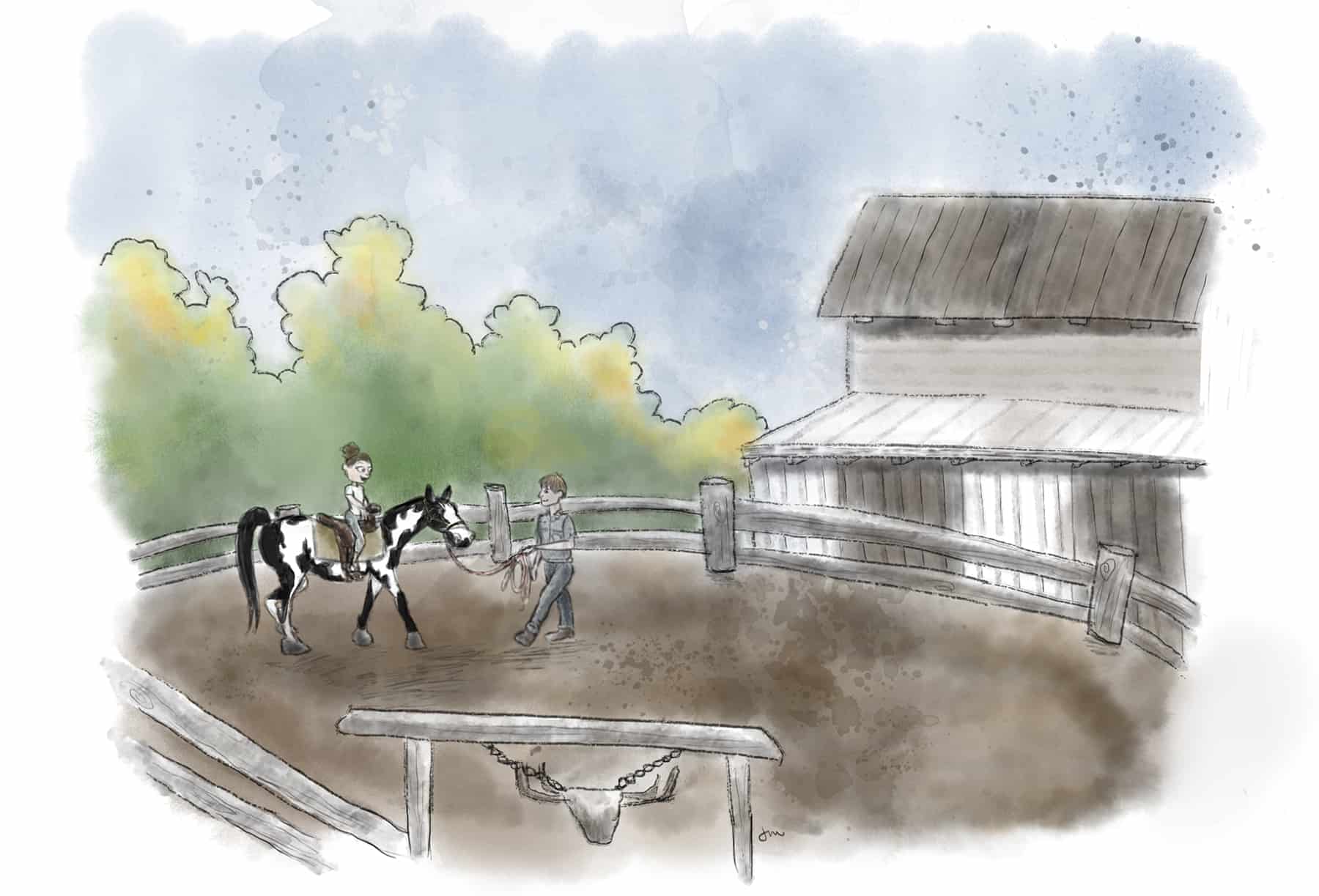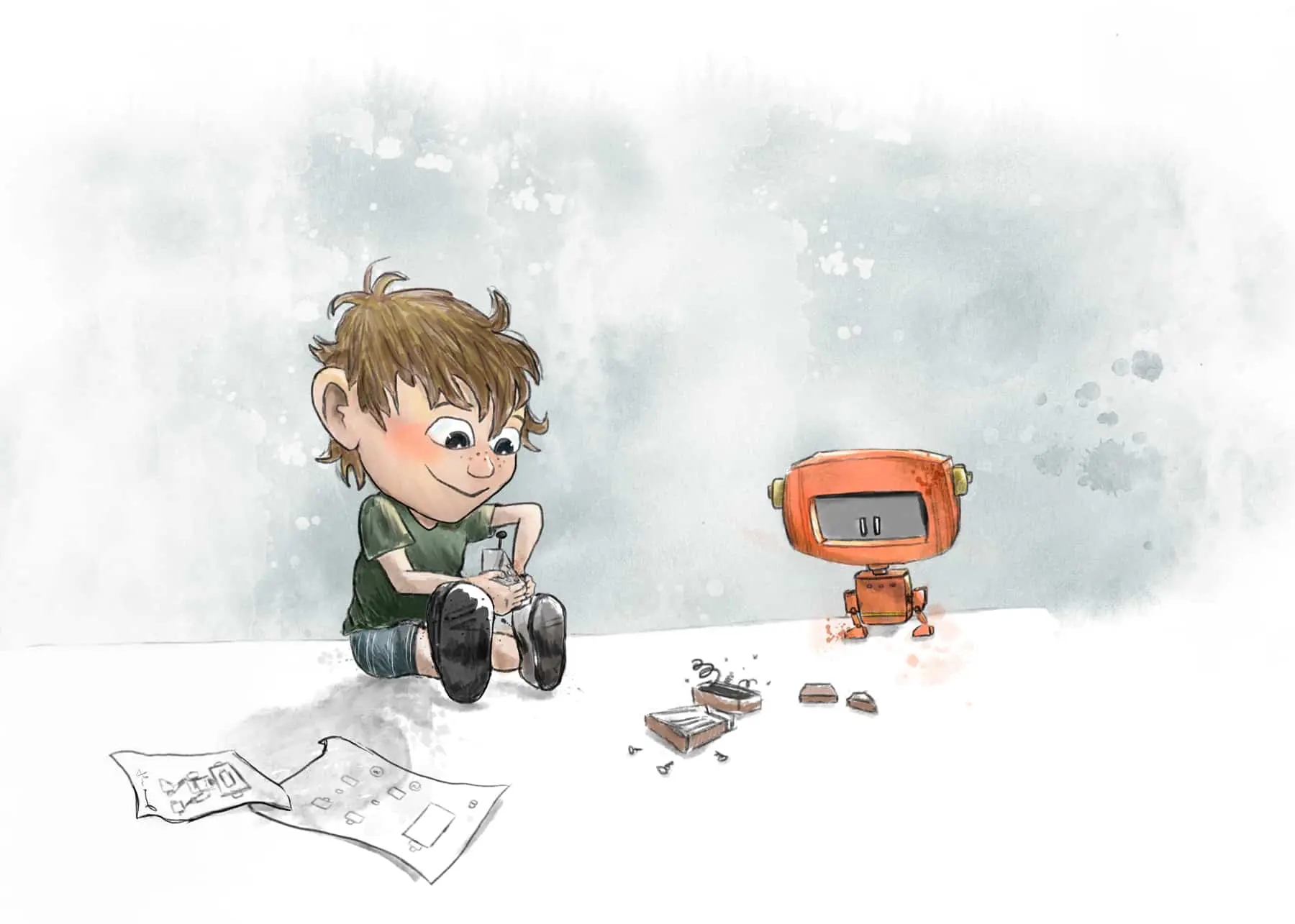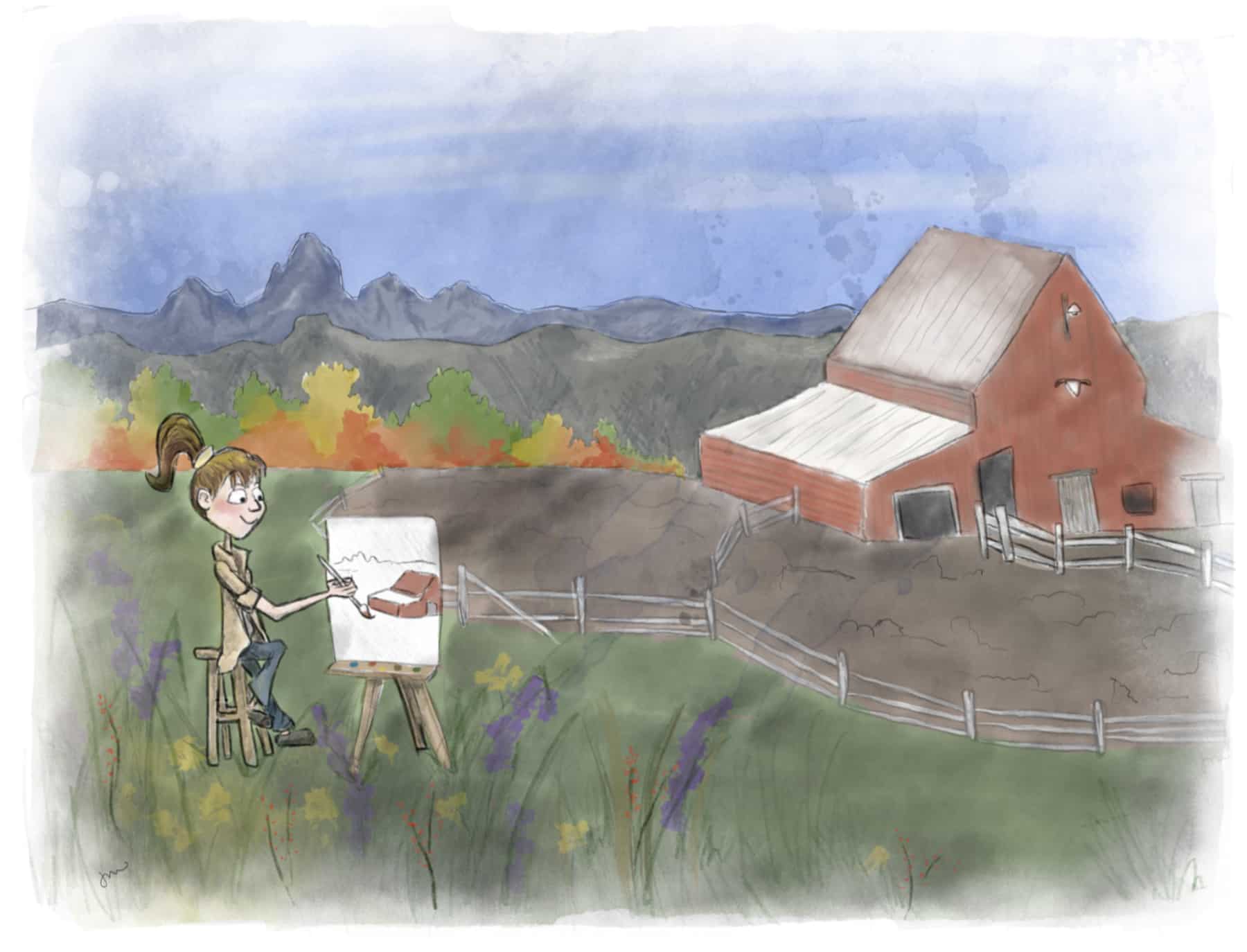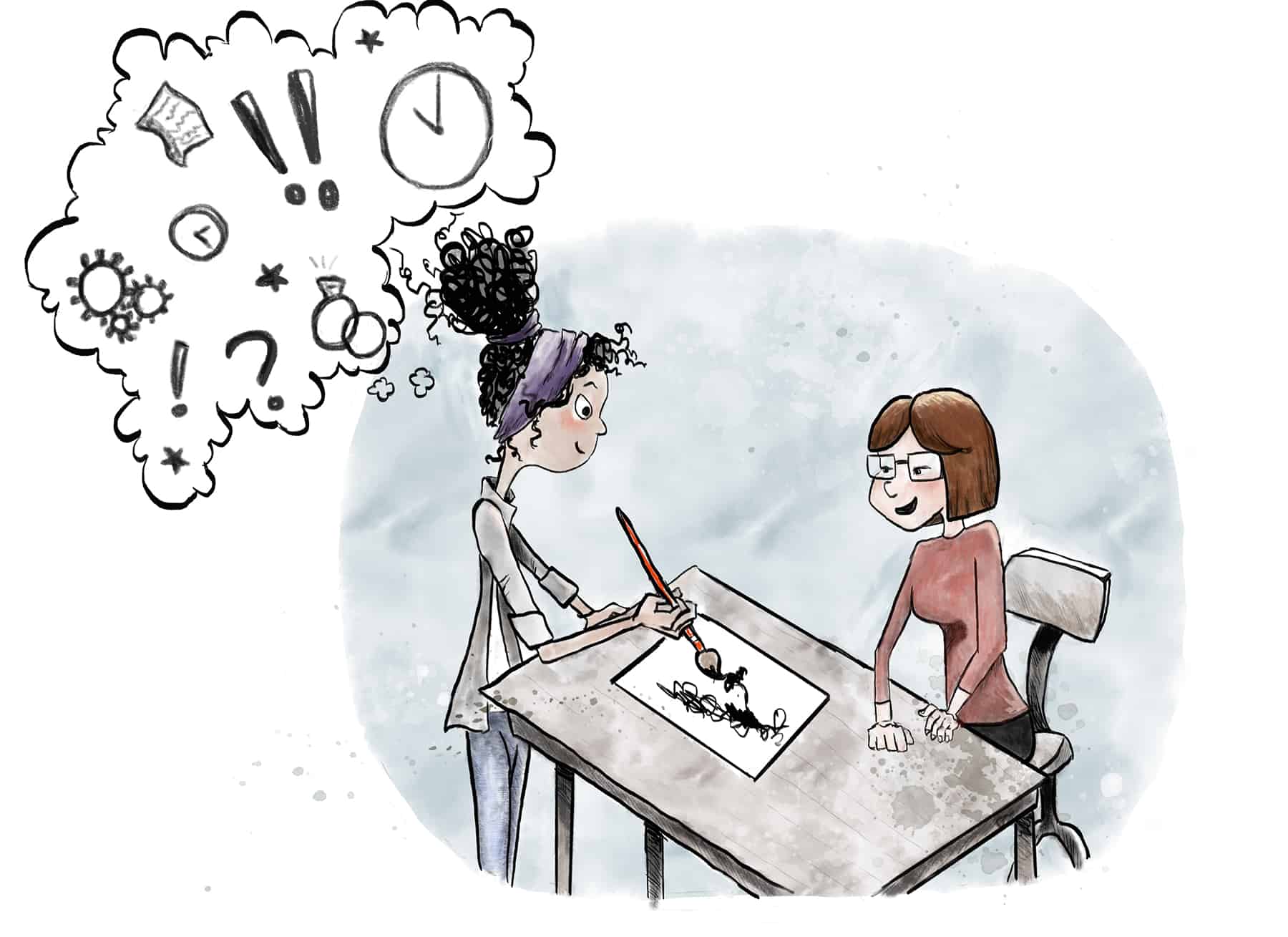By Tibby Plasse // Illustrations by Julie Millard
—
The French monk and social activist, Thomas Merton, once wrote, “Art enables us to find ourselves and lose ourselves at the same time.” He might not have been addressing mental health or therapeutic practices, specifically, but art can be a means of self-care.
Not long ago, there was a post on the Teton Valley Community Facebook page from a woman asking for a space to craft, claiming it was a necessary practice for her mental health. In the post, she mentioned simply needing more room than what she had available to her. But for me, there was a clear takeaway—the act of creating was this person’s means of self-preservation, and by crafting art, we can all find the gateway to personal healing.
Something to (Not) Talk About
For those with an introverted personality, traditional talk therapy is not always an easy way to retrieve, revisit, and digest trauma or anxiety. Talk therapy can seem like an obstacle that creates more stress for an individual that struggles to articulate herself, or for someone who’s uncomfortable revealing his struggles at a regularly scheduled office appointment. In this instance, drawing, singing, playing music, and even grooming a horse can be just as therapeutic as talking through problems. Therapists who receive art training also learn to become observant facilitators of art practices, body language, and the transition from creating art to verbal communication.
“Not just anyone can call themselves an art therapist,” explains Leann Dzemske, M.Sc., ATR-P, PPC, art therapist at Teton Behavior Therapy. “We are accredited professionals trained to make observations in multiple modalities, such as painting, drawing, pottery, fabric [arts], and abstract practices.”
Dzemske works locally in both Teton County, Wyoming, and Idaho, with anywhere between 20 to 40 patients a month, across the age spectrum. She uses the seminal text, The Expressive Therapies Continuum: A Framework for Using Art in Therapy by Dr. Lisa Hinz, as a reference for her work. The book shows how different levels of visual experience, and the application of art media, is used to process information from the brain.
Hinz explains in her book, “Images provide a vehicle for the metaphorical language that appeals to so many. Images help clients understand, express, contain, and soothe emotions. Images can also be used behaviorally or cognitively, and they can aid in tracking client growth and progress in therapy.”

The act of creating allows for multilevel sensory work, including information processing and problem solving, and it happens on both a perceptual and emotional level. This modality also acts as a form of expression, where imaginative involvement exists simply on the merits and joys of creating. This type of autonomy can provide emotional relief, while also improving self-esteem through self-discovery.
“Art is a nonverbal way of communication that bridges a gap between the therapist and patient when trauma, experiences, and emotions cannot be verbalized,” said Dzemske. “When making art, the subconscious has the opportunity to access things that might be dormant or difficult to talk about.”
Sara McKeown White, a trained trauma therapist and director of the Teton Mental Health Coalition in Teton County, Idaho, explains how trauma works.
“[Trauma] is stored in our bodies, and essentially we need to feel it to heal it. [Professionals] often refer to a wellness wheel when relaying how to take account of our full health,” she says.
The wheel White is referring to represents a circle of seven categories: emotional health, relational health, mental and intellectual health, physical health, spiritual health, vocational and professional health, and environmental health.
“When we’re attending to all the parts [of the wheel]—that’s when we achieve health and wellness. But it’s also important how we attend to each aspect,” she explains.
You can’t ski or snowboard your trauma away. It needs to be recognized and tended to with practices that encourage emotional digestion, not divergence. White says there’s a range of artful practices to choose from.
“Maybe, [for you], it’s journal therapy, or meditation; maybe it’s yoga or going to Makerspace,” she says. “We need to find connection with others, and we need to have [wellness] practices that are not just endurance sports.”

Rising to the Challenge
The Teton Valley Mental Health Coalition is doing what it can to bridge the gap between “feeling” and “healing” by taking out the financial commitment to one’s well-being and underwriting six sessions for any community individual in need. They are also partnering with Teton Valley Hospital’s upcoming assessment on community mental health.
“It’s very hard to say what is just mental health because depression has many causes,” explains Keith Gnagey, the CEO of Teton Valley Hospital. The hospital is working with Quorum Consultants to conduct interviews and aggregate data collected from 2021, and then present this to the community before the year is over. Next, the hospital will analyze this data in an effort to better assess their own capacity to meet the needs of the community.
With the data in place, and as the Teton Valley Mental Health Coalition moves into their new space in Driggs, White explains, “We’re going to have all this room for practitioners and community members of any age to have somewhere to check in to, and to host programming. The assessment will allow us to be more poignant about what programs we choose to initiate based on the outcome.”
“The coalition is in a massive growth stage, and we want to expand our offerings to see that everyone in Teton Valley is not just well, but thriving,” says White.

The Merits of Creativity
Despite the limited number of local health practitioners available for one-on-one counseling, groups, and classes, a cadre of untraditional therapy options, in the form of public programs, provide both a connection to the community and a channel for managing trauma.
Tribe JH, the Art Association of Jackson Hole, Teton Arts Council, and the Local Galleria in Driggs all offer community art classes. Valley of the Tetons Library and Jackson Hole Writers Conference host writing workshops and regular writing groups. And, Makerspace at the Driggs library provides endless supplies for crafting and creating in an informal group setting. Then, there are also national and international online classes and group programs—like the weekly art and poetry classes offered by the Metropolitan Museum of Art that address life pre- and post-pandemic.
HAPI Trails and Jackson Hole Therapeutic Riding Association also offer programs for all ages that range in focus from on-ground horse care to riding lessons. Horses interact and respond to a rider’s nonverbal communication, allowing the rider to gain trust and confidence with a large animal, while helping to form healthy boundaries for themselves.
Teton Valley Hospital’s outpatient programs and Teton Behavior Therapy’s ongoing programming is regularly adjusted to fit the needs of the local community. Gnagey says the first step towards care is to make an appointment with your family practitioner, especially if you’re not sure what modality would be a good fit, or even how to articulate your feelings in the first place.
From organizations and healthcare providers to volunteering and taking art classes, there are options outside of traditional talk therapy that we can all utilize to answer the needs of our emotional barometers. The effect of drawing, singing, and working with animals may seem intangible, but art therapy and other nonverbal therapies, are much like a multivitamin for your wellness—it’s something that’s easily accessible, affordable, and preventative.
** Note: A misprint in our paper edition noted the wrong credentials for Leann Dzemske, M.Sc., ATR-P, PPC. Instead, Jennifer Bradof, MSW, LCSW, is the executive and clinical director for the very important community organization, Teton Behavior Therapy.

